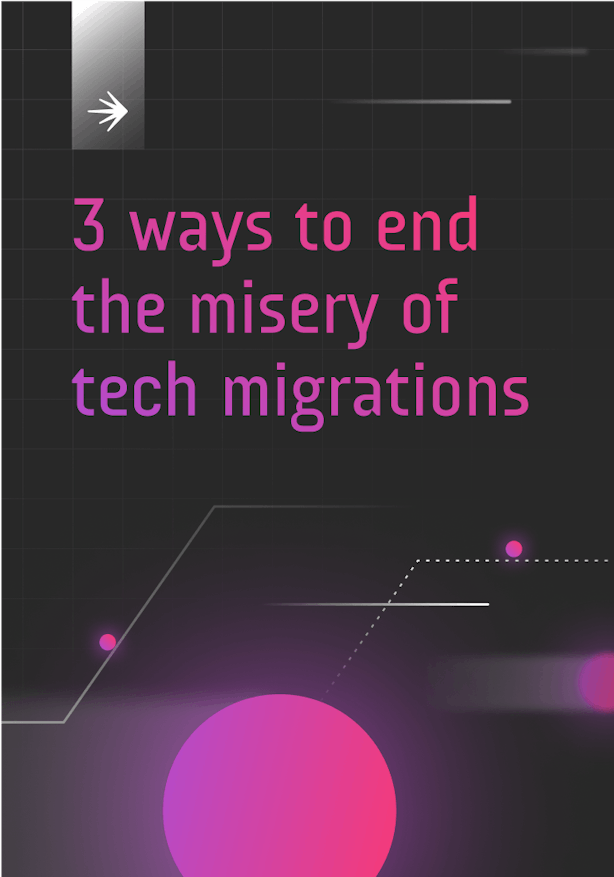3 ways to end the misery of tech migrations
Safely migrate and modernize across cloud services, databases, and APIs.

3 major causes of migration failures
Before we can succeed with migrations, we need to understand why they fail.
1. Big-bang migrations lead to big-bad results
In 2018, a UK-based bank went through a botched database migration, losing an estimated £330 million and 80,000 customers in the process. The story serves as a cautionary tale for businesses attempting to perform migrations at a scale that quickly becomes unmanageable when things go wrong.
While we don't know what exactly happened inside the bank, we can say that many organizations are forced to migrate large swaths of infrastructure all at once. For example, a database migration doesn’t just entail switching databases; it may also require changing API routing, front-end services, and other parts of the infrastructure. These big-bang migrations cause a great deal of stress and present major risks.
2. You can’t fix what you can’t see
Rolling out new back-end components to all users all at once is quite risky. If organizations could release to a subset of users and environments first, thus limiting the blast radius of potential errors, it would mitigate some of that risk (spoiler: feature flags shrink the blast radius). But this alone isn't enough to ensure a smooth, successful migration.
Organizations also need a way to monitor the impact of infrastructure changes on application performance and business metrics at every stage of a migration. Unfortunately, many organizations lack a way to gradually roll out new back-end systems. And they struggle to easily correlate a degradation in performance with a specific back-end change.
3. Back-end errors tank customer experiences and drive up costs
When errors occur during a migration, they often take a long time to resolve. In many cases, teams have to roll back to an older version of their service. This type of recovery can be quite burdensome and time-consuming. Worse, it fails to shield customers from the impact to services. In the UK bank example above, millions of customers were unable to access their accounts and, in some cases, logged in to find other customers' private account information instead of their own. Failures like these can cost businesses gobs of money.
The above challenges make organizations apprehensive about pursuing modernization. But failing to adapt is equally risky, and companies that do embrace modernization stand to gain.
Thankfully, it is possible to mitigate migration risks and reap the rewards—let's explore how.













